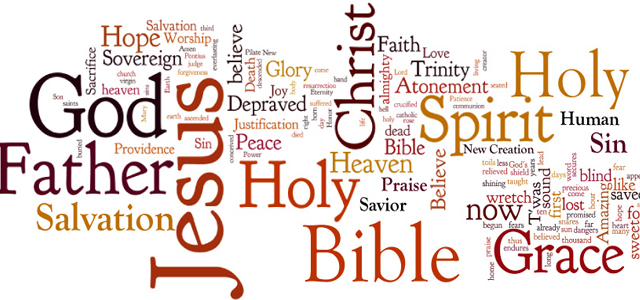“He ascended into heaven and sits at the right hand of the Father”
In the second century after Christ, many gnostic sects sprang up claiming to be the authentic interpreters of the Christian faith. But they were deeply troubled by some parts of the gospel tradition, including the stories of Christ’s ascension (Mark 16:19; Luke 24:51; Acts 1:9-11).
Marcion’s edited version of the Gospel of Luke omitted both the birth narrative and the ascension, since Marcion wanted a spiritual, disembodied Christ. Other teachers claimed that Christ ascended spiritually, leaving his physical body behind. For such gnostic interpreters, the human body is evil; the material world is consigned to ruin; salvation is about escaping the misery of this world. According to this view, Christ wanted nothing to do with physical life in this world. At the earliest opportunity he fled the scene and escaped into the safety of a purely spiritual existence.
It was against such teaching that the early Christians proclaimed a gospel of Christ’s bodily incarnation, bodily suffering, bodily death, bodily resurrection, and bodily ascension. The faith of the ancient Church was not about spiritual escape but about the redemption and transfiguration of human life in its fullness, including the life of the body. As the second-century pastor Irenaeus put it, the Son of God “did not reject human nature or exalt himself above it,” but united himself with our nature in order to unite us to God. Christ was raised and exalted as a true human being. In Christ, human nature has taken up its abode in God’s presence.
When the New Testament writers speak of the ascension, they are not describing Christ’s absence but his sovereign presence throughout creation. Christ’s ascent “to the right hand of the Father” is his public enthronement over all worldly power. No scriptural passage is quoted so often in the New Testament as Psalm 110:1: “The Lord says to my Lord, ‘Sit at my right hand until I make your enemies your footstool.” The earliest Christians proclaimed that Christ had been enthroned as the universal messiah. The exalted Christ has “entered his glory” (Luke 24:26; 1 Tim 3:16), and from now on “all things are subject” to his authority (Phil 3:21; Heb 2:8).
The ascension does not mean that Christ has gone away from us. He is not absent. He has been exalted in order to exercise his authority even more fully. He “has gone into heaven and is at the right hand of God, with angels, authorities, and powers made subject to him” (1 Pet 3:22). Because he is ascended, his risen life is universally available. His loving authority extends over the whole creation and is present wherever believers assemble (Eph 1:20-23).
So the ascension is not meant to make us wonder where Christ has gone. Instead it ought to provoke the question, “Where can I go from your presence?”
In a painting by the Aboriginal artist Shirley Purdie, the ascension of Jesus is shown not as a flight into the sky, but as a triumphant ascent into the earth. He “ascends down” into the sacred land – not fleeing our world but entering into its depths in order to exercise his loving authority over (and within) the whole creation. This is a profound depiction of the New Testament understanding of Christ’s ascension. Because he is ascended, he is not far from us. “In him all things hold together…and in him God was pleased to reconcile all things” (Col 1:17-20).
The ascended Christ is there for us and is able to draw us more and more into the loving presence of his Father. To quote Irenaeus again, we “ascend through the Spirit to the Son, and through the Son to the Father.” And one day, Irenaeus adds, believers will come to share so fully in God’s unbounded life that “they will forget to die.”
Ben Myers is Lecturer in Systematic Theology at United Theological College












